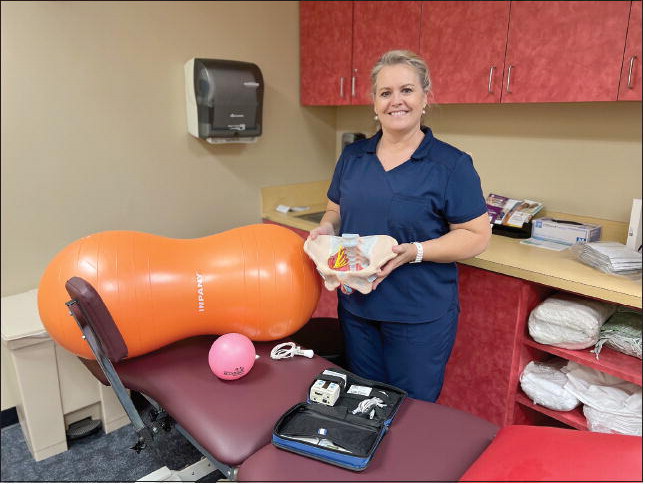Pelvic Floor Therapy Could Be the Solution


Most women may not have given much thought to strengthening their pelvic floor, but it could be the answer to correcting ailments that can affect females of a wide range of ages.
Wendy NeeSmith is a physical therapist who is specially trained to identify pelvic floor issues and to provide customized therapy in strengthening pelvic muscles to address problems ranging from incontinence to abdominal pain.
With a doctorate in physical therapy, NeeSmith has undergone additional training to provide a service being offered by Memorial Health Meadows Hospital at its Wellness Center in Vidalia. Introduced to the community in January, the specialized therapy has so far served clients ranging in age from 18 to 89.
Many women who develop health problems like incontinence often believe there is not much that can be done, that it is just part of aging. But that is not necessarily true.
NeeSmith explained that the pelvic muscles are similar to a sling and support the bladder, reproductive organs and rectum; but when the pelvic floor is impacted by circumstances such as pregnancy and childbirth, an auto accident, surgical scarring, or other factors, it becomes dysfunctional. This dysfunction can manifest in symptoms including bowel and bladder issues, low back and hip pain, organ prolapse and sexual pain.
Patients are referred to NeeSmith by a primary care provider (PCP) or a specialist, such as an obstetrician- gynecologist, urologist, or neurologist, who believes the patient can benefit from pelvic floor therapy to address their symptoms. Treatment may be short or long-term, and is customized according to the patient’s individual needs. Treatments are provided in a secluded, private environment, and may be transferred to the home setting when appropriate to be continued by the patient. Pelvic floor therapy is a combination of education and physical exercises designed to address specific needs. As part of the therapy, patients are acquainted with the pelvic floor — where it is and how it functions. “Does the patient need strength or length? Length is needed first in order for the pelvic floor to go through its full range of motion to perform effectively,” Nee-Smith explained, adding, “Abdominal muscles relax or contract for different functions. You would be surprised how tight people’s hamstrings are, which impacts the postural line they need to get their back in line to recruit abdominal muscles.”
She illustrated the course of treatment. Exercises start in supine position, progressing to breath control, tightening muscles, flattening the back down, and lifting the buttocks.
“We do stretches, strengthening and developing hip muscles around the pelvic girdle as well as abdominal muscles so the patient will be stable without thinking about it. It’s synergistic, gathering all of these muscles to work together to stabilize the pelvic floor, while building core strength.” This stabilization enables the patient to control functions when sitting, standing, walking, climbing, or while standing on one leg, for instance, when throwing one leg over an object such as a bathtub.
Even bad habits are addressed, since some of the therapy may include behavior modification. Many busy women may not be taking adequate bathroom breaks, NeeSmith said. “You would be surprised at habits people build up that add to a problem.”
The duration of treatment depends on the patient’s specific diagnosis and individual response to treatment. Some of the therapy can be performed as part of the patient’s home exercise program.
NeeSmith and Meadows are getting the word out about pelvic floor therapy. NeeSmith is encouraging doctors to add screening for pelvic floor issues. Those who think they may have a pelvic floor issue are encouraged to discuss this with their physician to see if a referral is appropriate.
Pelvic area pain is a personal issue which many women may not feel comfortable acknowledging, but NeeSmith hopes this will change as more women understand the benefits of pelvic floor therapy.







